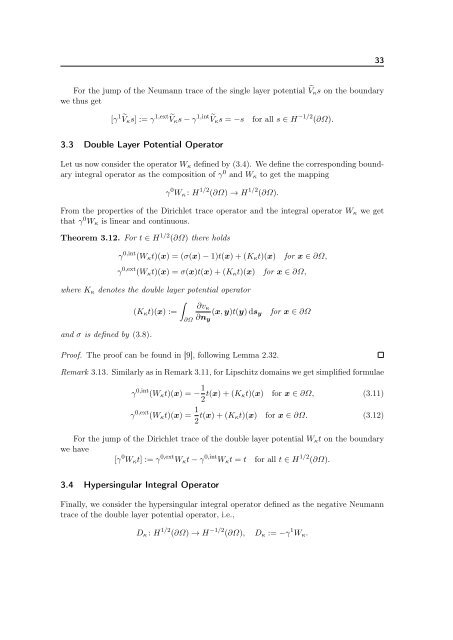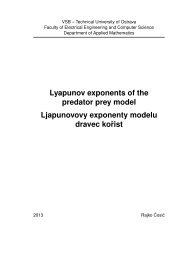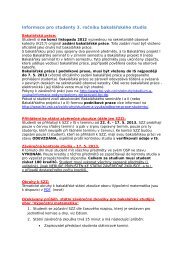The Boundary Element Method for the Helmholtz Equation ... - FEI VÅ B
The Boundary Element Method for the Helmholtz Equation ... - FEI VÅ B
The Boundary Element Method for the Helmholtz Equation ... - FEI VÅ B
Create successful ePaper yourself
Turn your PDF publications into a flip-book with our unique Google optimized e-Paper software.
33For <strong>the</strong> jump of <strong>the</strong> Neumann trace of <strong>the</strong> single layer potential V κ s on <strong>the</strong> boundarywe thus get[γ 1 Vκ s] := γ 1,ext Vκ s − γ 1,int Vκ s = −s <strong>for</strong> all s ∈ H −1/2 (∂Ω).3.3 Double Layer Potential OperatorLet us now consider <strong>the</strong> operator W κ defined by (3.4). We define <strong>the</strong> corresponding boundaryintegral operator as <strong>the</strong> composition of γ 0 and W κ to get <strong>the</strong> mappingγ 0 W κ : H 1/2 (∂Ω) → H 1/2 (∂Ω).From <strong>the</strong> properties of <strong>the</strong> Dirichlet trace operator and <strong>the</strong> integral operator W κ we getthat γ 0 W κ is linear and continuous.<strong>The</strong>orem 3.12. For t ∈ H 1/2 (∂Ω) <strong>the</strong>re holdsγ 0,int (W κ t)(x) = (σ(x) − 1)t(x) + (K κ t)(x)γ 0,ext (W κ t)(x) = σ(x)t(x) + (K κ t)(x)<strong>for</strong> x ∈ ∂Ω,<strong>for</strong> x ∈ ∂Ω,where K κ denotes <strong>the</strong> double layer potential operator∂v κ(K κ t)(x) := (x, y)t(y) ds y∂n y∂Ω<strong>for</strong> x ∈ ∂Ωand σ is defined by (3.8).Proof. <strong>The</strong> proof can be found in [9], following Lemma 2.32.Remark 3.13. Similarly as in Remark 3.11, <strong>for</strong> Lipschitz domains we get simplified <strong>for</strong>mulaeγ 0,int (W κ t)(x) = − 1 2 t(x) + (K κt)(x) <strong>for</strong> x ∈ ∂Ω, (3.11)γ 0,ext (W κ t)(x) = 1 2 t(x) + (K κt)(x) <strong>for</strong> x ∈ ∂Ω. (3.12)For <strong>the</strong> jump of <strong>the</strong> Dirichlet trace of <strong>the</strong> double layer potential W κ t on <strong>the</strong> boundarywe have[γ 0 W κ t] := γ 0,ext W κ t − γ 0,int W κ t = t <strong>for</strong> all t ∈ H 1/2 (∂Ω).3.4 Hypersingular Integral OperatorFinally, we consider <strong>the</strong> hypersingular integral operator defined as <strong>the</strong> negative Neumanntrace of <strong>the</strong> double layer potential operator, i.e.,D κ : H 1/2 (∂Ω) → H −1/2 (∂Ω), D κ := −γ 1 W κ .









